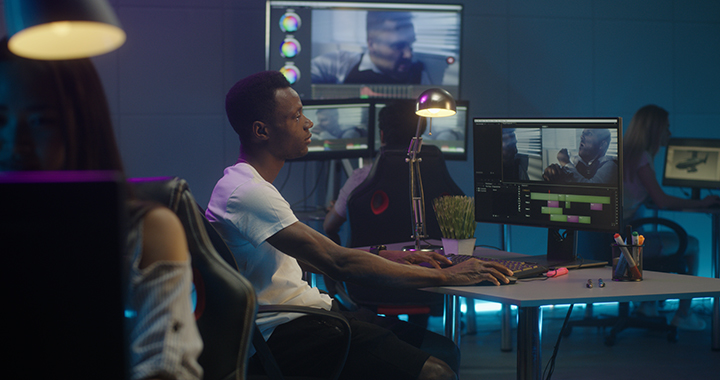The Radio/TV/Broadcasting department joined forces with Netflix to give students an inside look at a career in post-production.
The world of post-production — any work done on a film after shooting has wrapped — offers a vibrant path for budding creatives, said Netflix employees Brandie Konopasek and Nicole LaLoggia to a virtual room of RTVB students.
“It’s getting it all together into the pretty package that you see onscreen so that it’s not just a rough cut that someone has done in their basement,” Konopasek said.
Konopasek, who worked on Marvel and Disney films before her move to Netflix, said that big-picture elements of post-production like editing and sound design are instrumental to any production, but sometimes the small touches bring a scene together.
When working on the now-iconic scene from “The Avengers” where The Hulk slams Loki into the ground, Konopasek and her coloring team found a problem with the footage they received of Loki laying on the torn-up floor after his beating — there wasn’t a scratch on him. It was a minor detail, but it undercut the intensity of the scene, and the team was just one week away from their deadline.
One of Konopasek’s colorists had an idea. He went into the footage and added light shading to give the impression of dirt and bruising. It was a simple fix, but it did the trick.
“What you see onscreen today wasn’t makeup on set. It wasn’t a visual effect. It was just our colorist going in at the last second,” Konopasek said.
For any final product to come together, all elements of post-production need to work in tandem with one another, she said.
Konopasek recalled sitting in on the final coloring session of “The Avengers.” To fully assess their work, the color team had to sit through an entire screening of the movie. Because the sound mix wasn’t done yet, that meant watching it all without audio.
“I sat there for the full two hours and I thought ‘This movie’s going to bomb,’” she said.
But by the time the film had gone through its full sound design, editorial and mix, Konopasek rewatched it with an audience and realized just how wonderful it had turned out. It was a testament to the power of countless creatives funneling their talents into a single vision.
No project could turn out well without having people willing to dedicate time to these individual elements, said Konopasek.
LaLoggia, who produced the cult film “Swingers” said that work in post-production might not spring to mind as an accessible career path for many students, but there is fulfilling work to be done by those willing to step into it.
“What I always wanted to do was edit, but I didn’t even know how to do that,” she said. “I didn’t even know who to talk to. We want you to see how viable this is.”
Cinematography instructor Chad Jones, who moderated the session, hopes it gave students new ideas of career paths available to them in the industry.
“I was just astonished at the number of post-production positions available to graduates like yourselves one day,” he said.
Netflix will continue to offer students insight into the post-production process through a monthly seminar called Netflix Post Pals, available to all RTVB students.

